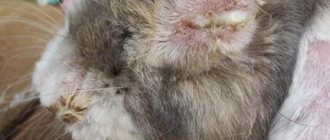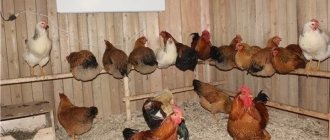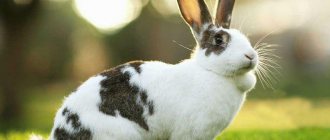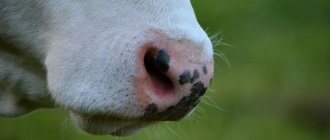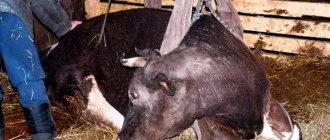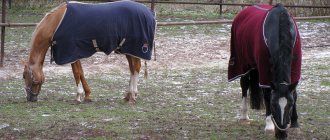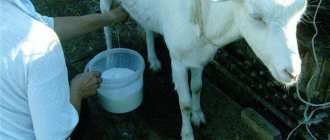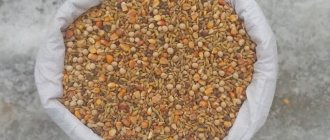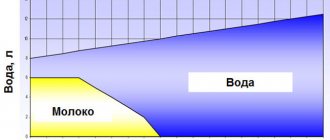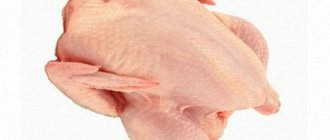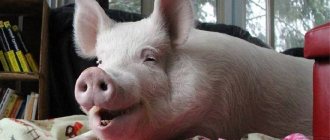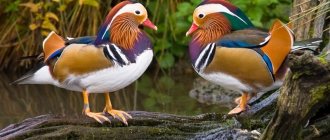Physiological features
Have you ever wondered why horses sleep standing up? For sure! But the question is not asked correctly. Deep sleep of horses lasts 2 - 3 hours. The process takes place in a supine position. They can doze for 8 hours without laying down on the ground. The knee joint of animals has a specific segment that blocks the kneecap.
This is a defense mechanism. It allows a resting horse to quickly react to the appearance of predators and other dangers. Young individuals sleep lying down, knowing that their parents will wake them up. And they can jump up faster than a heavy adult horse.
If you take into account the complex structure of the hooves, it becomes clear why horses are shod. The keratinized areas of the legs are rough and dense, but sensitive organs. Many nerve endings and blood vessels are concentrated here. Wild animals cope well without horseshoes. However, they choose the road themselves, avoiding rocky areas, and are not subject to pressure from loads. Neglect of the hooves of domestic horses will lead to leg deformation and the development of diseases.
Do you know why horses have their eyes covered? There are special wooden and leather devices and blinders. They allow animals to doze off without being distracted by what is happening around them. Due to the location of the eyes on the sides of the muzzle, the angle of vision reaches 3600. The slightest movement causes the artiodactyl to worry about its safety.
Blinders for horses
Blinders for horses
The horse's eye shields have additional reinforcements consisting of hard leather or wire. They are able to hold the pads in a stationary position. Why do horses close their eyes on the sides? Since a horse is a rather timid animal, it may become frightened by changes in the viewing angle for reasons beyond its control. Therefore, for the peace of the mammal and the ability for a person to establish contact with horses, it is extremely necessary to wear eye pads.
Among other things, they protect the horse’s eye from external irritants such as dust, wind, moisture, etc. Considering the fact that the horse is accustomed to controlling all actions and reacting to movements that occur from the side and behind the back, the presence of shields that cover the side view allows the horse to remain calm and balanced during the period of competition or fights and to shield itself from aggressive external factors.
Horse eye anatomy
The equine eye includes the eyeball, surrounding muscles and structures around the eyeball, called the accumbens.
Eyeball
The horse's eyeball is not a perfect sphere; it is flattened from front to back. However, research has shown that the horse does not have a tilted retina, as previously thought.
The wall of the eye consists of three layers: the inner or retinal membrane, the choroid and the fibrous membrane.
- The retina
(or retina) is made up of cells connected to the brain via the optic nerve. These receptors are sensitive to light and include the less light-sensitive cones, which allow you to see colors and provide visual acuity, and the rods, which are more light-sensitive and promote night vision, but can only distinguish between light and dark. Since only two-thirds of the eye can perceive light, there is no need for receptor cells to cover the entire inside of the eye, so they are located only on a line from the pupil to the optic disc. The part of the retina that is covered with light-sensitive cells is called the retina. pars-optica retinae, and the blind part of the eye is lat. pars-ceaca retinae. The optic disc of the eye contains no light-sensitive cells: it is the place where the optic nerve exits the brain and the blind spot in the eye. - The choroid
(or uveal tract) consists of the choroid, ciliary body and iris.
The choroid contains a lot of pigment and consists almost entirely of blood vessels. In the lower part of the eye, it forms a tapetum, which causes the yellowish-green glow of the eyes when the animal’s eye is illuminated at night. The tapetum reflects light back onto the retina, which improves twilight vision. The iris is located between the cornea and the lens, and not only gives the eyes color ( see "Eye Color" below
), but also allows you to change the amount of light passing through its central opening, the pupil. - The fibrous membrane
consists of the sclera and cornea and protects the eye. The sclera (the white part of the eye) is made up of elastin and collagen. The cornea (the clear covering at the front of the eye) is made of connective tissue and is washed by tears and aqueous humor, which provide it with nutrition since it does not have access to blood vessels. - The lens of the eye is located behind the iris and is suspended by the ciliary suspensory ligament and ciliary muscle, which provide accommodation: this allows the lens to change shape to focus on different objects. The lens consists of several layers of tissue.
Eye color
The homozygous double cream gene causes light blue eyes.
Most horses have dark brown eyes, but the irises come in a variety of colors, including blue, light brown, yellow and green. Blue eyes are not uncommon and are associated with the presence of white markings or piebald coloring. Horses with white markings may have either one or both eyes wholly or partially blue.
Horses with a homozygous cream gene always have light blue eyes and a pale isabella coat. The heterozygous cream gene in horses causes palomino and dun colors and often light brown eyes. The eyes of horses with the Champagne gene usually have a greenish tint: they are sea green at birth and become light brown as they age.
As in humans, in horses the genetics and etiology responsible for eye color are not yet entirely clear.
Adjacent organs
The third eyelid refers to the adjacent organs of the eye (visible in the left corner)
The eyelids are made up of three layers of tissue: a thin layer of skin covered with hair, a layer of muscles that open and close the eyelid, and the conjunctiva, which lies on the eyeball. A palpebral fissure forms between the eyelids. The upper eyelid is larger and more mobile compared to the lower eyelid. Unlike humans, horses have a third eyelid (nictitating membrane) that protects the cornea. It is located in the inner corner of the eye and closes diagonally.
The lacrimal apparatus produces tears, providing nourishment and hydration to the eyes, and also helps remove any debris that may become lodged in it. This apparatus includes the lacrimal gland and lacrimal canaliculi. By closing, the eyelids distribute tear fluid throughout the eye, after which it flows through the nasolacrimal duct into the horse’s nostril.
The eye muscles allow the eye to move inside the socket.
Eye structure and color
The horse's eyes are located on the sides of the skull. They are large, slightly convex, oval in shape, with a large pupil. Due to the oval shape of the eye, a horse's vision covers a larger surrounding area than a human's. Accordingly, even looking straight ahead, she covers nearby objects with her peripheral vision.
The horse eye consists of the cornea, lens, pupil and retina. The eyeball has a complex structure that is capable of transmitting and focusing beams of light, redirecting them to nerve endings, which, in turn, transmit impulses to the brain. Due to its complex structure, the horse's eye is extremely susceptible to external irritants, so the animal is prone to diseases such as cataracts, conjunctivitis, blepharitis, etc.
The lens is located behind the cornea. Between them is a layer called the iris. The iris contains the pupil and muscles that allow the pupil to catch focus. When the muscles of the iris work, you can observe a narrowing and dilation of the pupil. The iris also contains pigments that determine the color of a mammal's eyes. On the border part of the iris there are ring-shaped sections, which are called ciliary.
The inner body of the eye is called the retina. It has two sections: blind and visual. The retina is adjacent to nerve endings that process the light signal into impulses. The main optic nerve passes through the middle part of the retina. The area of the ocular body surrounding the nerve is the blind spot.
Behind the lens is a fibrous body called the vitreous.
On the outside of the eye there is a protection that looks like a fold of skin - this is the eyelid. The eyelid has muscles that allow the fold to close and open the horse's eyeball while keeping the eye moist. The inner side of the eyelid consists of the mucous membrane and lacrimal glands. The eyelid consists of an upper part, a lower part and a membrane at the inner corner of the eye.
Interesting. The most common eye color for horses is brown. But in rare cases you can find a horse with blue, yellow, green and light brown eyes. The owners of blue eyes are most often pinto and bay horses; animals of champagne color have green eyes.
Visual abilities
Field of view
A horse's eye captures much more objects than a human's. Many animals have almost spherical vision, which need to notice a predator and leave a dangerous place, saving their lives.
The eye sockets of horses protrude slightly forward, which allows one to determine the shape and distance of objects. They also have areas called the blind spot. They are located in the back of the head, under the lower jaw of the animal, directly under the nose and extend to a distance of approximately 110 cm forward from the nasal part. Binocular vision of horses is about 65°, monocular - 285°.
The horse's eye captures much more objects than the human eye
Visual acuity
Horses have fairly acute vision. Their visual acuity is less than human, but greater than that of dogs and cats. Although a horse can see distant objects more clearly than a person.
Important! In order to quench his thirst with water from the drinking bowl, which is located right in front of the animal’s nose, he needs to turn his head so that the process does not occur blindly. The horse should look at how far away the sippy cup is; to do this, the head should be slightly turned. This is the only way she will be able to see the picture that fell into her blind spot.
Color difference
The horse is able to distinguish colors. True, her palette of shades is quite meager in comparison with a human one. But the animal is able to remember the main bright colors. Moreover, they are remembered at the level of emotional perception. For example, if she was praised and encouraged by a person wearing a bright blue thing, she will subsequently associate this color with calmness and joy.
Do they have night vision?
Due to the fact that the horse's eye contains a vascular layer called tapetum, these animals have excellent orientation in the dark. They distinguish objects well, the distance to them in the dark, sometimes even better than on a sunny day. According to ongoing research, scientists have come to the conclusion that a person sees differently from the way a horse sees. Thanks to the special structure of the eye, horses feel more comfortable on cloudy days than on bright daylight.
Note! A horse perceives transition periods from bright light to its absence much more difficult than a human. That is why, in order for the eye to get used to daylight, when leaving a dark room, it is necessary to maintain a time interval of at least 2 minutes.
Read also: Ram rabbits
Can they judge distance and depth?
Horses can judge both the distance to an object and its depth. These features allow them to participate in various races and competitions. But animals have a different perspective from humans. In order to estimate for themselves the approximate distance to an object, horses look at it with one eye, while closing the other.
Retina of a horse's eye
With stereoscopic vision, the visual axes of the eyes are placed in such a way that the patterns of the object being examined appear on similar areas of the retina of the two eyes. As a result, a whole binocular image will emerge, a convex vision of the world.
The retina is the inner sclera of the eyeball, formed by fibers of the visual nerve and 3 layers of cells sensitive to light: rods and cones.
A single nerve ending is connected to any cone, which guarantees the accuracy of the elements; However, cones only pay attention to fairly good lighting. As for the sticks, here, on the contrary, a number of cells are brought to 1 nerve ending - this deprives the picture of narrow detail, but it makes it possible to capture even the poorest lighting: since the impulses from individual sticks are summed up
The fovea is the region of superior visual acuity, located in the central lobe of the inferior eye. It contains the highest number of cone cells per unit of retinal plane for this eye. The fovea exists in humans and several animals.
Sleeping with your eyes open
Due to the presence of strong genetic memory in horses, they have the so-called herd sleep. For proper rest, these animals only need 3 hours of sleep. That is, during the normal course of the day, which passes without stress for the horse, without a painful condition, with the presence of good nutrition, it should regain strength in a lying position for 1.5 to 3 hours. She simply will not be able to lie on one side anymore, since due to the pressure of her body weight on the lung it causes some discomfort. The horse spends this period of full sleep with his eyes closed. According to the results of the research, scientists came to the conclusion that during deep sleep the animal is able to see dreams and remember them.
The rest of the time that the horse spends in the stall motionless is usually referred to as dozing.
The rest of the time that the horse spends in the stall motionless is usually referred to as dozing. At this time, the horse suspends many physiological processes, and from the outside it seems that he is in deep sleep. But while the horse is dozing, his eyes are open. This happens because the horse has the roots of a wild animal that is used to living in a herd. Sleep in a herd follows its own rules. While most individuals are sleeping, others are dozing and guarding the deep sleep of the first, open eyes are needed to quickly react to dangerous movements occurring from any direction. During such a period of rest, the horse cannot dream of anything.
The peculiar body structure of these mammals allows them to evenly distribute their weight across all four limbs and fix it in this position without creating unnecessary stress on the joints. Such rest allows the horse to assess the situation and monitor its safety. Even being in her usual stall, she cannot feel completely safe. This factor is also influenced by the fact that in a separate room the horse is isolated from its closest relatives, so no one but it can assess the possible danger and warn about it; accordingly, you should be vigilant on your own.
Knowing the structure of your pets’ bodies is not only useful, but also very interesting. Studying the characteristics will help you better understand the behavior of animals and establish closer contact with them.
https://moiloshadki.ru/zrenie-loshadi-i-osobennosti-glaz/https://pets2.me/bok/1940-glaza-loshadi-osobennosti-stroeniya-i-zritelnogo-analizatora.htmlhttps://7ogorod. ru/loshadi/glaza.html
Beliefs about the eyes of the deceased
Since the times of paganism, superstitions associated with the eyes of the deceased have remained on Russian soil.
- The eyes of the deceased are closed so hastily that he does not have time to drag a large number of people nearby to the next world.
- Closing the eyes of the deceased also prevents the soul from returning to the dead body and becoming a demon.
- If the eyes remain slightly open, and at the same time there are open mirrors around, the soul of the deceased can see its reflection and get lost, not getting to the right place in the afterlife for purification.
- It is customary to place round-shaped metal money on the eyes of the deceased, the size of the eye sockets, so that the eyes do not open and the living are not drawn to the dead side. That is, the weight of the coins prevents the opening of the eyes during the funeral procession. If this happens even in a closed coffin, it is believed that through the gap in the coffin the deceased can take those around him to the next world with his gaze.
- There is an opinion that, having remained with his eyes open during the end of life, a person saw his death. At the same time, this means that he did not have time to do anything during his lifetime.
Interesting!
After this tradition, you remember the ancient Greeks, who placed coins next to the deceased at the burial site, which, according to legend, were needed to pay for Charon’s transportation across the afterlife river Styx. They believed that if they did not put in the coins, the soul would remain wandering and suffering on the banks along the river forever.
Do horses have night vision?
But scientists are still arguing about how developed the night vision of horses is. However, all these disputes are based on knowledge about the anatomical and physiological structure of the horse's body, and do not take into account the behavior of these animals in the dark.
A horse's eye is different from a human's. It is now known for sure that there are much more rod cells in the retina of a horse’s eye than cone cells (proportions about 9:1). Rod cells are responsible for visual acuity in low light conditions. The horse's eye is also equipped with a special “mirror” (scientifically called tapetum lusidum), which consists of special reflective silver crystals.
The light reflected by them passes through the retina once again, which increases the chances of it reaching the rod receptors. It is thanks to the tapetum lusidum that the eyes of many animal species begin to glow at night. It seems that the issue has been resolved - horses see well in the dark. However, there is one point. Such a “mirror” undoubtedly increases sensitivity in low light conditions, but due to the scattering effect, the clarity of vision decreases significantly.
However, if we discard scientific theories and take a closer look at the behavior of these animals, then the question disappears by itself.
How well does a horse see into the distance?
I have to say that it's pretty good. At least better than a person with a slight level of myopia.
For example, when assessing a person's vision using letter tables, a 100% result is 20/20. When evaluating horses on a similar “fine lines” test, the result is 20/30.
In other words, if a person with a vision level of 100 percent sees an object well from 10 meters, then a horse will also see it well from 7.5 meters.
This is a worthy result, since, for example, in the USA, driving licenses are given to people with 20/40 vision. And if we compare horses with other animals, then cats have 20/75 vision, rats have 20/300. Judge for yourself.
More on the topic: Can horses swim?
Horse eye anatomy
A horse's eye reaches 5 centimeters in diameter and weighs 50 grams. It has a complex structure: the eyeball, the surrounding muscles and adjacent organs. With the help of muscles, the apple moves in different directions. The adjacent organs are the eyelids and the lacrimal apparatus. They are involved in peeling the apple.
Features of the eyes
Features of a horse's eye include:
- lateral location on the skull;
- eyeball size;
- ability to distinguish colors;
- wide field of view;
- ability to navigate in the dark;
- the ability to see with both eyes separately, independently of each other.
The wall of the apple is surrounded by 3 layers of membranes - fibrous, vascular, and reticular. The structure of the eye also includes the lens.
Each layer of the shell and element of the apple is responsible for its function:
- the fibrous membrane protects and moisturizes the eyeball;
- the shell of vessels serves to regulate the amount of light penetration;
- the retina helps distinguish colors and maintain image clarity;
- The lens allows you to focus on individual objects.
The iris is located in the choroid. The iris, which contains pigment cells, determines the color of the eye. Most colors have brown eyes. Some breeds have blue, green, or light brown irises.
]Albinos are rare among horses. Their iris does not contain pigmentation, so the eye appears red due to translucent blood vessels.
The pupil has an oval transverse shape. This structure allows you to see objects in a larger space.
Retina
The retina is the cells that connect to the brain via the optic nerves.
The retina is sensitive to the penetration of light, equipped with cones and rods that allow you to distinguish certain colors and navigate in the dark.
Each cone is connected by a single nerve ending. This makes it possible to see colors clearly in good lighting.
The rods are attached by a group of cells to one nerve ending. Thanks to this connection to the retina, the horse can see at night.
Part of the retina does not contain light-sensitive cells. This part makes up the optic disc.
Adjacent organs
Adjacent organs include the eyelids and lacrimal apparatus.
Eyelid 3-layer:
- The first layer has a thin structure and is covered with hairs.
- The second is a layer of muscles that cause the eyelid and conjunctiva to close and open. The conjunctiva covers the eyeball.
- The third layer is the nictitating membrane, which protects the cornea.
The lacrimal apparatus, which includes the lacrimal gland and tubules, performs the function of moisturizing the apple. The tear helps remove debris that gets trapped under the eyelid.
During blinking, tear fluid is evenly distributed throughout the apple.
This is interesting: Araucana (breed of chickens)
Visual abilities
The structural features of the eyes determine what vision capabilities nature has endowed horses with.
Visual field
The location of a horse's eyes on the sides of its head gives the animal a much greater field of vision than a human. When the head is raised, the field of vision approaches spherical.
This feature is present in many animals that can at any moment become a victim of a predator, but in horses the eye sockets are turned slightly forward, which gives a viewing angle of approximately 60°.
The “blind spot” of horses is insignificant - they only do not see what is happening immediately behind the back of the head, above the forehead and under the chin. And to see these places, even a slight turn of the head is enough.
Learn how to apply nutrition to your horse's hooves, joints and coat.
Visual acuity and focusing
The animal's visual acuity is slightly higher than that of humans. Modern scientists believe that the retina, right in the center of the eye, is crossed by a small horizontal line that is filled with receptor cells - this is the area that perceives light best.
Are the colors different?
Well-known expert and long-time equine vision specialist Dr. Brian Timnay believes that horses are similar to humans with a slight impairment in color perception.
He is confident that these animals have no problem distinguishing red or blue from gray. Regarding green and yellow, the results are contradictory.
Did you know? During races, horses are less likely to knock down an obstacle when jumping over it if it is painted not one color, but two or more.
However, it can still be said with certainty that horses distinguish colors and easily react to them. For example, if you take two feeders, red and blue, of the same shape, and regularly put food only in the blue one, the horse will begin to recognize it and only approach it, ignoring the red one.
Can they see in the dark?
In the dark, a horse can see better than a human. There are almost 20 times more rod cells on the retina of a horse eye, which perceive weak light well, than cone cells.
In addition, under the retina of this animal there is a kind of “mirror” made of silvery crystals (tapetum). The light reflected from it moves back through the retina, making it less likely to miss the rod receptors.
Find out what is notable about the horse breeds: Soviet draft horse, Trakehner, Friesian, Andalusian, Karachay, Falabella, Bashkir, Oryol trotter, Appaloosa, Tinker, Altai.
Even if this causes some scattering of the clarity of the outlines, it does not prevent the animals from orienting themselves well in the dark.
Owners should be aware that horses do not adapt well to sudden changes in light, so they may be frightened by, say, moving from a lawn to a dark van.
The complex structure makes the horse's visual organs very sensitive to external influences, so they are often exposed to a variety of pathological processes.
How to test a horse's eyesight
Visual impairment is common in horses, so a thorough examination is recommended. When testing a horse's vision, it is first necessary to examine the eyes for the presence of white spots, as well as determine the reaction to different lighting. An indicator such as the ears can serve as a guide: if there are vision problems, they are positioned incorrectly.
There are several ways to test a horse's vision. A fixed pupil when the light changes indicates complete blindness of the horse. Lightly waving your hand in front of your eyes and slowly approaching the eye with any accessible object, such as a handkerchief or a piece of paper, will also test your vision. Using this method, it is important not to scare the horse, performing all actions carefully. If the horse is blind, it will not move until an object touches the cornea. A sighted animal should step back and become alert.
Thus, it can be argued that horses see somewhat differently than humans. The world around them is not so colorful, more blurry and yet incredibly full and interesting. Even though they see slightly differently, the basic functions of the eyes are quite similar. Knowing all these features, it is possible to achieve complete mutual understanding between different biological species.
{SOURCE}
Eye diseases
Horse with solar keratosis carcinoma
Any eye injuries such as this swelling require immediate veterinary attention.
Any eye injury is potentially serious and requires immediate veterinary attention. Clinical signs of injury or disease include swelling, flushing, and abnormal discharge. Without treatment, even relatively minor eye injuries can lead to complications that can lead to blindness. Eye injuries and diseases include:
- Corneal abrasion
- Corneal ulcer
- Keratitis
- Conjunctivitis
- Uveitis, including recurrent uveitis and recurrent ophthalmia. Spontaneous recurrent equine uveitis occurs in 10-15% of horses, while Appaloosa horses have an eightfold risk.
- Habronema
- Keratoconjunctivitis sicca
Horse eye diseases
Despite the common expression “as healthy as a horse,” these large animals can also get sick. Let's look at the symptoms and treatment methods for the most common eye diseases. Learn how to care for horses and ponies.
Conjunctivitis
Conjunctivitis is a disease that is inflammatory or infectious in nature.
It leads to the following symptoms:
- the eye becomes swollen and red;
- the eyelid becomes red and glassy;
- yellow or green sticky discharge appears;
- the eyelid remains half-closed for a long time;
- the animal is lethargic and refuses to eat.
Treatment begins only after the pathogen is detected. It consists of the administration of antibacterial, antifungal or steroid drugs, as well as the use of drops or even surgery.
Did you know? Rolling a horse on the ground, in which he experiences great pleasure, is not just entertainment. This way the animal stimulates blood circulation and restores strength.
Cataract
Cataracts are caused by the opacity of the lens, which is responsible for focusing light onto the retina. Such problems lead to vision loss over time.
Symptoms are as follows:
- milky white spots on the surface of the eyeball;
- poor vision;
Treatment is carried out through surgery, during which the affected lens is removed.
Recurrent uveitis
This disease, which is also called “moon blindness,” is a common problem that leads to the appearance of serious pathologies. It manifests itself in the form of episodic intraocular inflammation, which is caused by microorganisms and lasts for quite a long time. Uveitis can lead to secondary inflammation - for example, causing a corneal ulcer and leading to recurrent uveitis. Learn how to transport a horse correctly. The disease is manifested by the following symptoms:
- inflammation of the choroid;
- constriction of the pupil;
- small spots on the pupil;
- the cornea is cloudy and blue.
Treatment involves a complex combination of drugs. The main treatment lasts at least 2 weeks, and after the disappearance of clinical symptoms, additional therapy is recommended.
Most often used:
- steroid drops - to get rid of inflammation;
- atropine - for pain relief;
- antibiotics - to treat infections.
Important! To treat the eyes, you should only use ointments labeled “For ophthalmic use” - otherwise, you can cause even greater harm to the animal.
Blocked tear ducts
Tears drain into the nasal cavity through the tear duct, which is very thin and can easily become damaged or clogged, preventing tears from draining naturally.
Blocked tear ducts are manifested by the following symptoms:
- watery eyes;
- overcrowding of the eyelid area with tears;
- hair loss under the eyelid.
To prevent flies that are attracted by lacrimation from infecting the body with infections that they often carry on their legs, the problem must be dealt with as quickly as possible.
Squamous cell carcinoma
Squamous cell carcinoma is one of the most common malignant tumors affecting the eyelids. The disease appears as warts or growths on the eyelid or surface of the eye.
Main symptoms:
- damage to the edge of the lower eyelid and the outer corner of the eye;
- the growth of a dense plaque or node with uneven edges;
- spread of inflammation to neighboring tissues.
Treatment consists of surgical removal followed by chemotherapy or cryotherapy, which is the best option in this case.
Sarcomas and melanomas
These two types of tumors can potentially affect the eyes and surrounding tissue.
They can be diagnosed by the following symptoms:
- swelling of the upper eyelid;
- visual impairment;
- the appearance of nasal congestion;
- protrusion of the eyeball;
- not closing the eyelid;
- the appearance of ulcers on the cornea.
For an accurate diagnosis, it is important to consult a veterinarian. Treatment of these serious diseases is possible only under the supervision of a specialist with the help of powerful medications.
Find out how to choose a horse for yourself.
Corneal ulcer
The cornea protects the insides of the eye from damage, but is often itself subject to such damage.
Any problems associated with it are very painful and cause the following symptoms:
- frequent lacrimation;
- constant flashing;
- blurred eyes;
- soreness;
- change in pupil shape;
- edema;
- decreased vision.
Important! Never use ointment or drops that contain cortisone without information regarding the absence of a corneal ulcer - if there is an ulcer, this substance will worsen the problem.
Ophthalmic diseases
The cause of this disease is a virus. Treatment is carried out through external treatments and medication. In a horse with uveitis, the pupil narrows, spots appear, and the cornea becomes cloudy.
Corneal ulcer
Bacteria and injury can cause this serious illness. It is treated with immunostimulating and antibacterial drugs as prescribed by a veterinarian. With an ulcer, a spot appears, discharge from the eye, and the horse tries to keep it closed.
Conjunctivitis
Injuries, bacteria and fungi often cause the development of conjunctivitis. Treatment may vary depending on the type of disease and the extent of infection. A sick horse's eye oozes yellow fluid, the muscles surrounding the eye become swollen, and there is redness.
Blocked tear ducts
This problem often worsens in warm weather. Typically, tears drain into the nasal cavity through the lacrimal or nasolacrimal duct. But these pipes are very thin. Damage to them can prevent tears from draining, causing them to congest the eye area and wet the coat, causing hair loss or discoloration. Watery eyes can attract flies, which carry bacteria and cause eye infections.
A cataract is an opacity in the lens of the eye, which is responsible for focusing light onto the retina. It occurs due to a disease (eg ESV) and can progress over time, often leading to vision loss. Signs of cataracts include poor vision and white spots.
Read also: White giant rabbits: breeding features
Tumors. Squamous cell carcinoma
The tumors appear as warts or growths and often occur in the area of the eyelid, third eyelid, or surface of the eye. Treatment is carried out by a specialist using radiation therapy or cryotherapy (freezing). For tumors in the third eyelid, the entire third eyelid is usually removed. Tumors within the eyelid are the most complex; treatment consists of surgery and subsequent chemotherapy.
Notes
- Soemmerring DW
A comment on the horizontal sections of eyes in man and animals.. - Copenhagen:Bogtrykkeriet Forum: Anderson SR, Munk O, eds. Schepelern HD, transl., 1971. Soemmerring DW. - ↑
- ↑ Riegal, Ronald J. DMV, and Susan E. Hakola DMV.
Illustrated Atlas of Clinical Equine Anatomy and Common Disorders of the Horse Vol. II.. - Marysville, OH. Copyright: Equistar Publication, Limited, 2000. - Miller, Robert W. Western Horse Behavior and Training.
- Barnett, Keith C., et al.
Equine Ophthalmology. - London: Elsevier Saunders, 2004. - ISBN 0-7020-2748-0. - Les Selnow.
Happy Trails: Your Complete Guide to Fun and Safe Trail Riding. - Eclipse Press; Stated First Edition edition (October 25, 2004), 2004. - ISBN 1581501145. - Harman AM, Moore S, Hoskins R, Keller P. Horse vision and the explanation of visual behavior originally explained by the 'ramp retina'.
- Giffin, James M and Tom Gore.
Horse Owner's Veterinary Handbook, Second Edition. — New York, NY. Copyright: Howell Book House, 1998. - Prince JH, Diesem CD, Eglitis I, Ruskell GL
Anatomy and histology of the eye and orbit in domestic animals. - Springfield, IL: CC Thomas, 1960.
Why do horses have their eyes covered in their stall?
Horses are majestic and noble animals. They need proper care. Why do horses have their eyes covered in their stall? Many novice horse breeders are seriously concerned about this issue.
Why do horses need to close their eyes?
The horse's visual system has a number of features. In particular, their eyes are larger than those of some larger animals. In this case, the horse’s viewing angle can reach 360 degrees due to the location of the eyes on the sides of the head. Therefore, horses even notice objects located behind them.
It is this feature that explains why horses have their eyes closed. This is done in the stall by putting on special plates called blinders. They are attached to the horse's muzzle. They are used precisely to block her view on the sides. This restriction of the horse's vision helps prevent the horse from being distracted by extraneous phenomena, namely traffic on the sides of the road or the crowd of the racetrack.
They can be made of wood or leather, and are attached to cheek straps. They are especially relevant for nervous and timid horses. The blinders are additionally equipped with shore holders. This is a hard leather or wire frame that is attached to the headband. This is what protects the blinkers from the wind, because moving the blinkers can also seriously frighten the horse.
Horses' eyes are covered with blinders so that they are located 2/3 lower than the horse's level of vision.
Features of horse vision
As noted above, due to the special position of the eyes, the horse’s viewing angle approaches 360 degrees. It is not surprising that these animals notice objects and movement behind them. Their binocular vision angle is about 301-70 degrees, due to the fact that the stallions' eye sockets are slightly turned forward.
In other words, a horse can see even more with one eye than a person with two. By the way, you can track the direction of an animal’s gaze by the characteristic movement of its ears: where they turn, that’s where the horse looks.
Don't forget that horses perceive perspective differently than humans. They often look with only one eye, and also estimate the distance to a particular object in their field of vision.
Horse vision properties
Due to the fact that the eyes of this animal have a special structure and are located on the sides of the head, the horse sees differently than a person. The main feature of her vision is the ability to look behind without having to turn her head. In addition, the animal can see at night and distinguish colors.
line of sight
The total viewing angle is approximately 360 degrees. However, the horse sees objects located in different areas of its field of vision differently. Even with one eye she can see more than a person with two. The view is adjusted by changing the position of the head. That is why, in order to successfully overcome an obstacle, riders raise the horse's head so that they can assess where the object is located.
Color spectrum
It is extremely difficult to determine in what color range horses see the world, and today scientists have yet to understand this issue. It is generally accepted that animals distinguish yellow best, then green, blue and red.
Acuity
At a distance of 500 meters the horse can see quite well. You can evaluate how sharp an animal's vision is by conducting a test using letters. For a person, vision is considered good if it shows a result of 20/20, and for a horse the average is 20/30. In other words, a horse can clearly see an object from a distance of 20 feet, and a person can see it from 30. But a rat has a visual acuity of 20/300.
Night vision
The horse's eye has a special membrane, the so-called tapetum, which reflects light, and the animal has the ability to see at night. For the same reason, the eyes glow if you shine a light on them in the dark. Horse night vision is not as developed as a cat's, but it is better than a human's.
